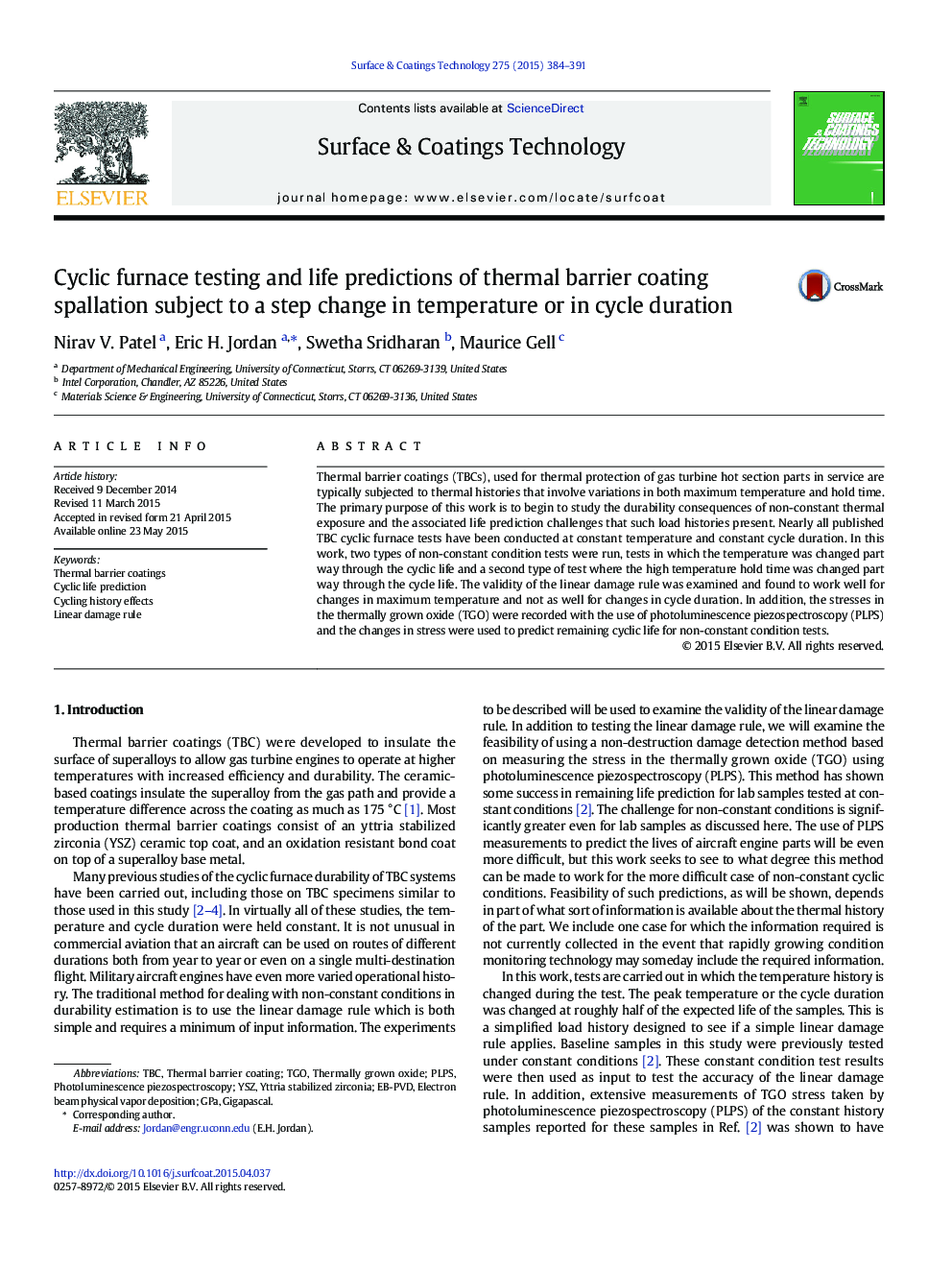| Article ID | Journal | Published Year | Pages | File Type |
|---|---|---|---|---|
| 8026471 | Surface and Coatings Technology | 2015 | 8 Pages |
Abstract
Thermal barrier coatings (TBCs), used for thermal protection of gas turbine hot section parts in service are typically subjected to thermal histories that involve variations in both maximum temperature and hold time. The primary purpose of this work is to begin to study the durability consequences of non-constant thermal exposure and the associated life prediction challenges that such load histories present. Nearly all published TBC cyclic furnace tests have been conducted at constant temperature and constant cycle duration. In this work, two types of non-constant condition tests were run, tests in which the temperature was changed part way through the cyclic life and a second type of test where the high temperature hold time was changed part way through the cycle life. The validity of the linear damage rule was examined and found to work well for changes in maximum temperature and not as well for changes in cycle duration. In addition, the stresses in the thermally grown oxide (TGO) were recorded with the use of photoluminescence piezospectroscopy (PLPS) and the changes in stress were used to predict remaining cyclic life for non-constant condition tests.
Keywords
Related Topics
Physical Sciences and Engineering
Materials Science
Nanotechnology
Authors
Nirav V. Patel, Eric H. Jordan, Swetha Sridharan, Maurice Gell,
